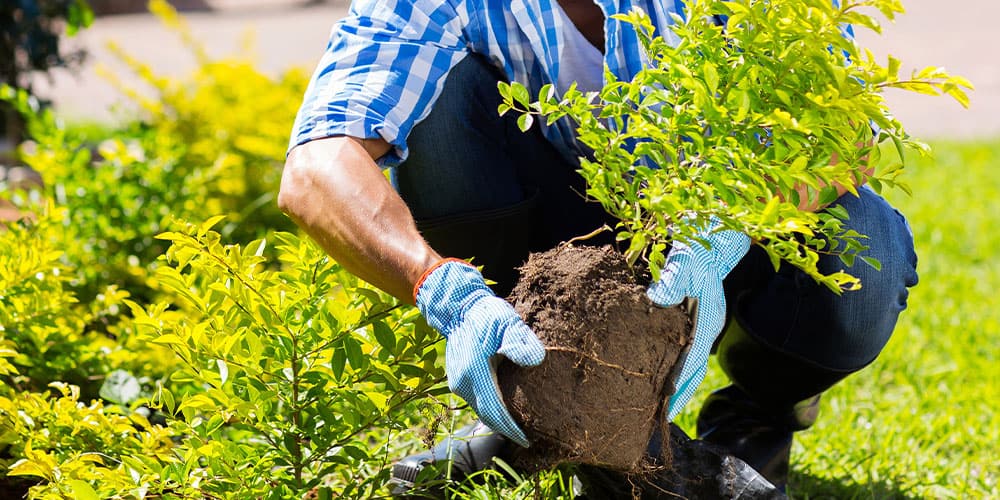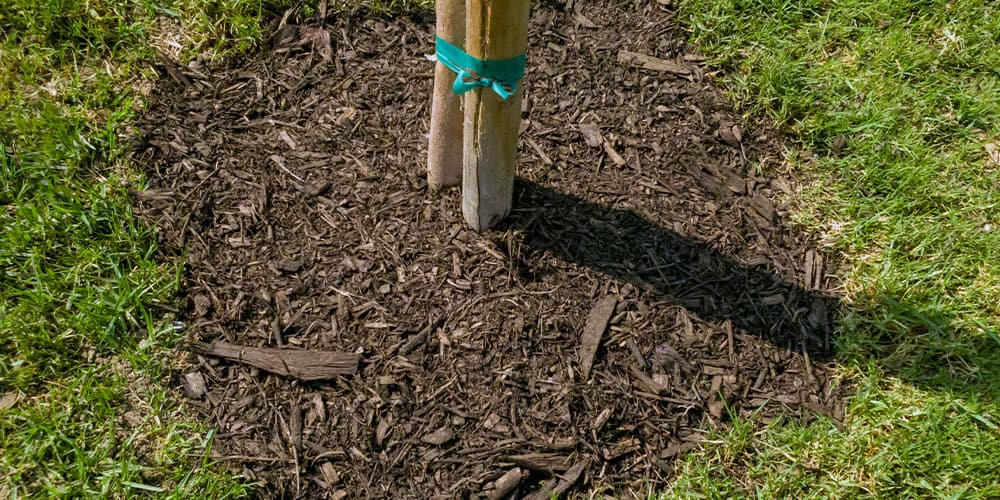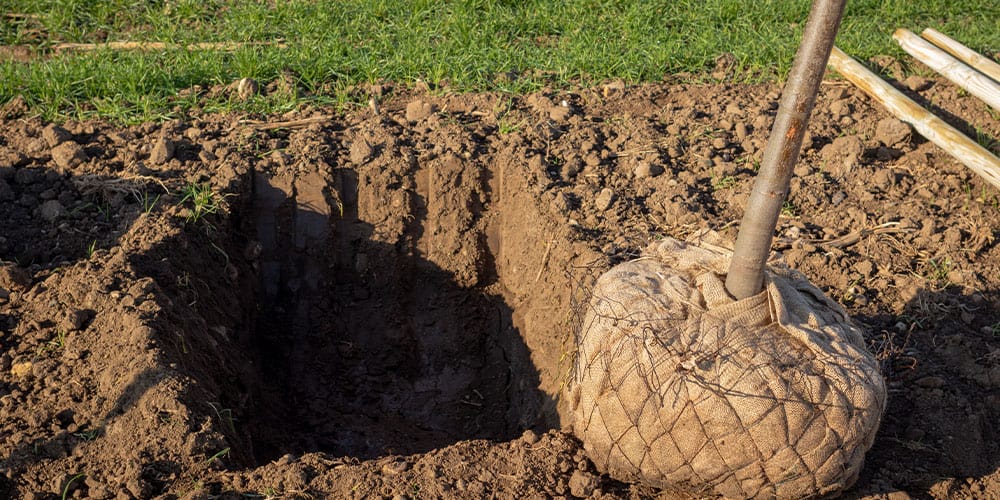Trees provide lasting beauty and countless benefits for your property, like fresh air, shade, and a source of wildlife habitat, fruit, and flowers. But planting a tree can be stressful for the tree itself. To set your new tree up for success, it’s essential to choose the best time for planting and support it with proper planting techniques!
When is the Best Time to Plant Trees?
The best time for planting trees and shrubs is when they are dormant in the early spring before leafing out or in the autumn after leaf drop but before the hard freeze. Planting them during dormancy reduces the stress they experience during transplanting and allows them to develop roots during the fall and early spring.
That said, planting trees also works well anytime in the cool autumn season and in spring before hot weather arrives. It’s impossible to plant during the winter when the ground is frozen. The summer also presents a challenge, as heat makes it very difficult for new trees to settle in and get comfortable. Although planting in the summer is harder on the trees, it is still possible to do so, as long as you commit to keeping your tree well-watered.
 When to Plant Spring Flowering Shrubs and Trees
When to Plant Spring Flowering Shrubs and Trees
The fall is the best time to plant spring-flowering shrubs and trees, like forsythia, lilacs, and crape myrtles, because you won’t be disturbing their blooming cycles. Plant them in the fall, and you’ll get to enjoy their blossoms the following spring.
When to Plant Conifers
The very best time to plant conifers is in the early spring, after the ground thaws. The refreshing rains and cool spring weather give them ample time to take root before the summer heat sets in.
The fall is the second-best time to plant conifers. It will give them both the autumn and spring to set roots before next year’s summer heat. Just remember to water them generously every week until the ground freezes and protect them over the winter with a layer of mulch.
 Tips for Successful Tree Planting
Tips for Successful Tree Planting
1. Choose the Right Location: For the best long-term success, start with a location with the right light and soil conditions for your specific tree and enough space for the tree to grow.
2. Dig Twice as Wide: Help your tree root through the surrounding soil by digging your hole twice as wide as your new tree’s root ball and a little deeper than necessary.
3. Plant at the Proper Height: Take care to plant the tree at the proper depth. Backfill the hole before planting, as necessary, to ensure the tree is neither too deep nor sticking out above the ground. The trunk flare at the base of your new tree’s trunk should be flush with the surrounding earth.
4. Supplement with Biotone: Biotone is a fertilizer that encourages root growth. You can add it to the hole of the tree at the time of planting.
5. Straighten the Tree: Step back and look at the tree from several angles to ensure the trunk is straight, and adjust the tree’s position until it is. It’s difficult, if not impossible, to straighten the tree after planting.

6. Mulch Your New Tree: Add 2-3 inches of mulch around the tree well to keep moisture in and protect it over the winter. Remember not to mound the mulch around the base of the trunk, and keep the mulch a few inches away from the trunk to prevent any rotting of the tender, young bark.
7. Water and Water Again: Water the new tree generously after planting and continue to water every day for 1-2 weeks. After two weeks, continue watering every 2-3 days, and water at least weekly in the fall until the ground freezes. If in doubt, check the moisture level below the mulch. If the soil is dry, it’s time to water. If you’re going away on holiday, set your sprinkler on a timer, or ask a neighbor to help with watering.
As the temperatures cool down this fall, it’s one of the best times to plant new trees and shrubs in your landscape. Visit our Moultonborough, New Hampshire garden center to view our selection, and follow us on Facebook or Instagram for more updates!


 Tips for Successful Tree Planting
Tips for Successful Tree Planting